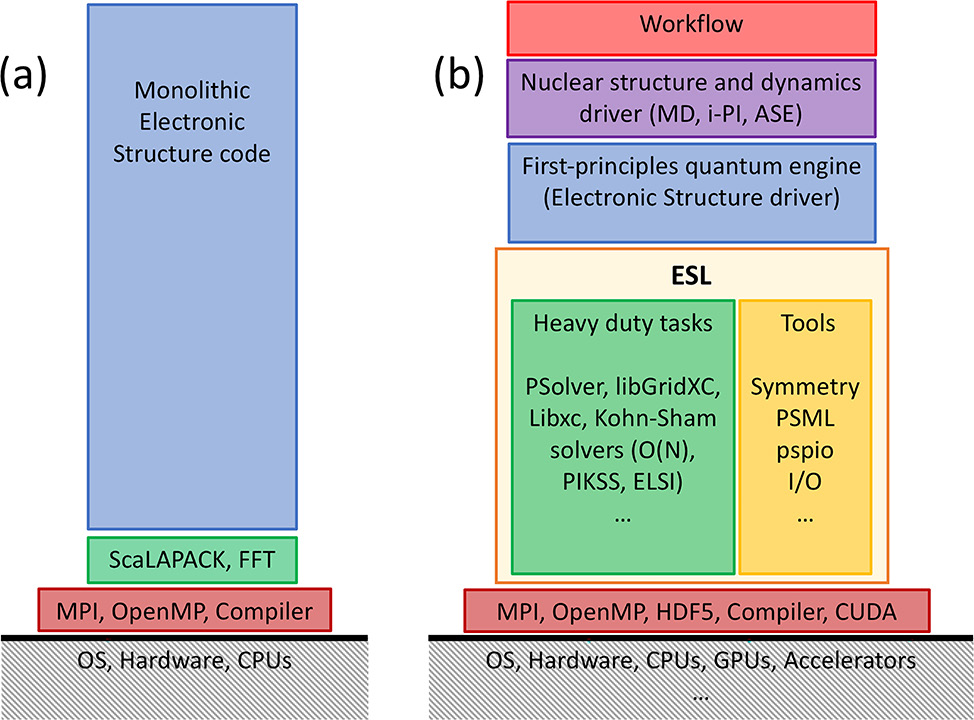Research Highlights
Open-source coding for electronic structure calculations
The Electronic Structure Library (ESL) has created an effective collaboration platform for a better way to develop software that utilizes electronic structure theory.

Electronic structure theory, which describes the motion of electrons in atoms and molecules, has wide-ranging applications for condensed matter physics, chemistry, materials science, biological sciences, and engineering. While research efforts have developed codes that implement certain aspects of the theory, the resulting software packages tend to be built independently from one another, which can be inefficient for increasingly complex simulations.
The Electronic Structure Library (ESL), initiated by the European Centre for Atomic and Molecular Calculations (CECAM), aims to create an effective collaboration platform for shared software development. Tasks common to electronic structure programs are presented as open-source libraries for anyone in the community to use. Such a modular paradigm ((b) in the figure), as opposed to the monolithic approach of the past ((a) in the figure), avoids the re-coding of well-known algorithms and allows scientists to focus on higher-level coding.
The CECAM electronic structure library and the modular software development paradigm, MJT Oliveira et al., J. Chem. Phys. 153 024117 (2020)